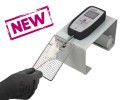Authors
Fang Wu, Marcela Catano, Ramiro Echeverry, Enrique Torre, Woldeab B. Haile, Jie An, Changhua Chen, Lihong Cheng, Andrew Nicholson, Frank C. Tong, Jaekeun Park, and Manuel Yepes
Lab
Department of Neurology and Center for Neurodegenerative Disease, Emory University School of Medicine, Atlanta, Georgia, USA
Journal
The Journal of Neuroscience
Abstract
Spines are dendritic protrusions that receive most of the excitatory input in the brain. Early after the onset of cerebral ischemia dendritic spines in the peri-infarct cortex are replaced by areas of focal swelling, and their re-emergence from these varicosities is associated with neurological recovery after acute ischemic stroke (AIS). Urokinase-type plasminogen activator (uPA) is a serine proteinase that plays a central role in tissue remodeling via binding to the urokinase plasminogen activator receptor (uPAR). We report that cerebral cortical neurons release uPA during the recovery phase from ischemic stroke in vivo or hypoxia in vitro. Although uPA does not have an effect on ischemia- or hypoxia-induced neuronal death, genetic deficiency of uPA (uPA?/?) or uPAR (uPAR?/?) abrogates functional recovery after AIS. Treatment with recombinant uPA after ischemic stroke induces neurological recovery in wild-type and uPA?/? but not in uPAR?/? mice. Diffusion tensor imaging studies indicate that uPA?/? mice have increased water diffusivity and decreased anisotropy associated with impaired dendritic spine recovery and decreased length of distal neurites in the peri-infarct cortex. We found that the excitotoxic injury induces the clustering of uPAR in dendritic varicosities, and that the binding of uPA to uPAR promotes the reorganization of the actin cytoskeleton and re-emergence of dendritic filopodia from uPAR-enriched varicosities. This effect is independent of uPa's proteolytic properties and instead is mediated by Rac-regulated profilin expression and cofilin phosphorylation. Our data indicate that binding of uPA to uPAR promotes dendritic spine recovery and improves functional outcome following AIS.
BIOSEB Instruments Used:
Grip strength test (BIO-GS3)

 Pain - Thermal Allodynia / Hyperalgesia
Pain - Thermal Allodynia / Hyperalgesia Pain - Spontaneous Pain - Postural Deficit
Pain - Spontaneous Pain - Postural Deficit Pain - Mechanical Allodynia / Hyperalgesia
Pain - Mechanical Allodynia / Hyperalgesia Learning/Memory - Attention - Addiction
Learning/Memory - Attention - Addiction Physiology & Respiratory Research
Physiology & Respiratory Research
 Pain
Pain Central Nervous System (CNS)
Central Nervous System (CNS) Neurodegeneration
Neurodegeneration Sensory system
Sensory system Motor control
Motor control Mood Disorders
Mood Disorders Other disorders
Other disorders Muscular system
Muscular system Joints
Joints Metabolism
Metabolism Cross-disciplinary subjects
Cross-disciplinary subjects Preclinical studies and opioids: role in crisis management in the United States
Preclinical studies and opioids: role in crisis management in the United States 